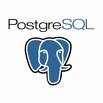 Last week, someone asked me what a "perfect" dashboard for a network would look like.
Trying to channel Tufte, I attempted to list all the variables that the viewer would care about.
Since management uses a dashboard more often than other users, that'd be my audience. I reduced
everything down to two variables: time and percentage of customers affected. Easy enough, right?
Last week, someone asked me what a "perfect" dashboard for a network would look like.
Trying to channel Tufte, I attempted to list all the variables that the viewer would care about.
Since management uses a dashboard more often than other users, that'd be my audience. I reduced
everything down to two variables: time and percentage of customers affected. Easy enough, right?
However, management probably wants to see the recent "in focus" and see how that flows into
the long run (comparing the detailed now to the full history of the enterprise).
That potentially large scale rules out a simple linear domain for the chart, and implies that a logarithmic
domain would work better. something like the following chart (not pretty enough for a dashboard, but you get the idea;):

So let's create a postgresql function to transform numeric input into
logarithmic buckets for grouping easily and efficiently:
create or replace function
logarithmic_axis(numeric, numeric, numeric, numeric)
returns numeric as $$
/*
return a logarithmic chunked display of data from table
XXX: with small width's, the time delta between periodic sampling dominates
*/
declare
stamp alias for $1; -- current epochal time to bucketize
init alias for $2; -- beginning of time range
fin alias for $3; -- end of time range
width alias for $4; -- how many buckets do we want
delta numeric = 0.0;
rate numeric = 0.0;
exp numeric = 0.0;
begin
delta := fin - init;
rate := pow(delta, (1 / width) );
delta := fin - stamp;
if delta = 0 then -- catch the last row
delta := 1;
end if;
exp := log(rate, cast(delta as numeric) );
exp := floor(exp);
return (fin - floor( pow(rate, exp) ) );
end;
$$ LANGUAGE plpgsql;
An example usage of this goes like (and is what generated the chart above):
select to_timestamp(logarithmic_axis(
cast(extract(epoch from stocks.day) as numeric),
(select cast(extract(epoch from min(day)) as numeric) from stocks),
(select cast(extract(epoch from max(day)) as numeric) from stocks),
120)) as l, avg(price) from stocks
group by l
order by l;
 Last week, someone asked me what a "perfect" dashboard for a network would look like.
Trying to channel Tufte, I attempted to list all the variables that the viewer would care about.
Since management uses a dashboard more often than other users, that'd be my audience. I reduced
everything down to two variables: time and percentage of customers affected. Easy enough, right?
Last week, someone asked me what a "perfect" dashboard for a network would look like.
Trying to channel Tufte, I attempted to list all the variables that the viewer would care about.
Since management uses a dashboard more often than other users, that'd be my audience. I reduced
everything down to two variables: time and percentage of customers affected. Easy enough, right?
